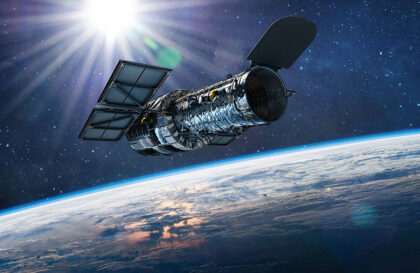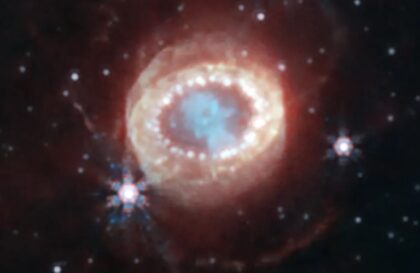On August 5, 2011, NASA’s Juno spacecraft began a five-year journey to Jupiter, the largest planet in our solar system.
Nine spacecraft have visited Jupiter. Seven flew past, and two circled the orbit of the gas giant. Juno, the most recent, arrived at Jupiter on July 4, 2016, after a 1,740 million-mile journey and entered a 53-day polar orbit extending from Jupiter’s cloud tops to the outer reaches of Jupiter’s magnetosphere.
Juno collected over three terabytes of scientific data during its 35 orbits of its primary mission around Jupiter. This mission changed our understanding of the atmosphere and internal structure of Jupiter, revealing the inner layers of the atmosphere and the deep part of the planet with a core of heavy elements. Juno also provided incredible views of Jupiter and its moons using a special NASA camera for the public to see. At the end of the mission, flybys of Ganymede turned Juno into a full-fledged explorer of the Jupiter system.
Chronology
Launch – August 5, 2011
Deep space maneuvers – August/September 2012
Gravity assistance during Earth flyby – October 2013
Arrival of Jupiter – July 2016
Expanded Mission – August 2021
End of mission – September 2025
The main purpose of the mission
Juno has the primary goal of uncovering the mysteries of Jupiter’s origin and evolution, as well as providing key lessons about the formation of planetary systems in the Universe. Using its scientific instruments, Juno examined the planet’s core, magnetic field, atmospheric chemistry, and auroras of Jupiter. These data have allowed important steps to be taken in understanding the processes underlying the formation of giant planets and their influence on the development of our Solar System.
The origin and evolution of the gas giant, Jupiter, plays an important role in the formation of the Solar System. It may be the key to solving many mysteries. One of the key mysteries is the origin of this planet. Jupiter, like the Sun, consists mainly of hydrogen and helium, and its appearance is associated with the formation of the Solar System. However, how it was formed remains a mystery. Could this have happened through the gradual build-up of gas around a massive planetary core or the destruction of unstable regions in the nebula, resulting in the formation of a planet?
Important to this puzzle are icy planetesimals—small protoplanets that could transport important materials such as water and carbon compounds that may be key to the emergence of life. By studying the composition of Jupiter’s atmosphere and its internal structure, Juno may help unravel the origins of this giant planet and, therefore, the solar system as a whole.
Exploring the mysterious depths of Jupiter, including its zones, belts, and atmospheric features, represents one of the most fundamental challenges in the study of this giant planet. Juno comes to the rescue, helping us solve many mysteries related to the global structure and movement of its atmosphere. It conducts detailed mapping of changes in atmospheric composition, temperature, clouds, and movements at depths inaccessible to previous studies.
Deep in Jupiter’s atmosphere, under enormous pressure, hydrogen turns into metallic hydrogen. This metallic hydrogen, an electrically conductive material, is believed to be the source of the planet’s powerful magnetic field. This field creates bright auroras when charged particles collide with Jupiter’s atmosphere. Juno studies these phenomena by collecting data on charged particles and magnetic fields near Jupiter’s poles, and by observing auroras in ultraviolet light. These studies not only help us better understand Jupiter but also provide valuable knowledge about similar magnetic objects, including young stars and their planetary systems.
Several mission episodes
First 3D image of Jupiter’s atmosphere
The Microwave Radiometer (MWR) aboard Juno helped study vortex storms in Jupiter’s atmosphere, including the Great Red Spot. New data showed that cyclones in the upper atmosphere are warmer and less dense than below, and their sizes were much larger than expected, extending beyond the region of cloud formation. The Great Red Spot also attracted attention because its mass could be measured through Jupiter’s gravitational field. Two additional Juno flybys provided highly accurate data on the storm’s gravity, complementing the MWR results and allowing these measurements to be taken even at great distances from Earth.
Jupiter’s Belts
The Juno mission is revealing secrets of Jupiter’s atmosphere, including distinctive bands and zones of clouds separated by strong winds that penetrate to depths of about 2,000 miles. Scientists are investigating the origins of these jet streams and data from Juno’s MWR hint at the role of ammonia in their movement.
In addition, the presence of circulating cells in the atmosphere of Jupiter was discovered, similar to the “Ferrell cells” on Earth, but on Jupiter, there are eight of them and much larger. The MWR data also revealed changes in bands and zones about 40 miles below the water clouds, where the belts become brighter in microwave light than the zones, but the opposite occurs at deeper levels below the clouds, reminiscent of ocean dynamics on Earth.
Polar cyclones of Jupiter
The cyclones at Jupiter’s poles, discovered by Juno, have a stable polygonal structure: eight at the north pole and five at the south. Data from Juno’s Jovian Infrared Auroral Mapper JIRAM shows that these atmospheric phenomena remain stable and constant in location. The interaction between cyclones causes vibrations, indicating their deep roots.
It is also found that cyclones on Jupiter, similar to hurricanes on Earth, move towards the poles, but cyclones located at the center of each pole push them away, which explains their location and different numbers at each pole.
Lightning on Jupiter
Juno recorded lightning on Jupiter, opening up new possibilities for studying atmospheric phenomena. This is the first time lightning has been visually observed on Jupiter. The lightning photograph was taken during Juno’s close flyby of Jupiter’s sulfur pole in December 2020. On Earth, lightning typically occurs in equatorial regions, but on Jupiter it occurs closer to the poles. Juno’s trajectory will provide additional opportunities to study lightning on the night side of Jupiter in the coming months.
Moons of Jupiter
Now, as part of its extended mission, Juno will continue to explore the solar system’s largest planet until September 2025, or the end of the spacecraft’s lifespan. This expansion challenges Juno to become an explorer of the entire Jupiter system—Jupiter, its rings, and moons—with additional encounters planned for two of Jupiter’s most intriguing moons: Europa and Io.
Image credit:
https://www.nasa.gov
https://www.missionjuno.swri.edu
https://www.nasa.gov
https://www.missionjuno.swri.edu
https://www.nasa.gov
https://www.nasa.gov
https://www.nasa.gov






